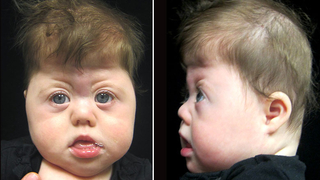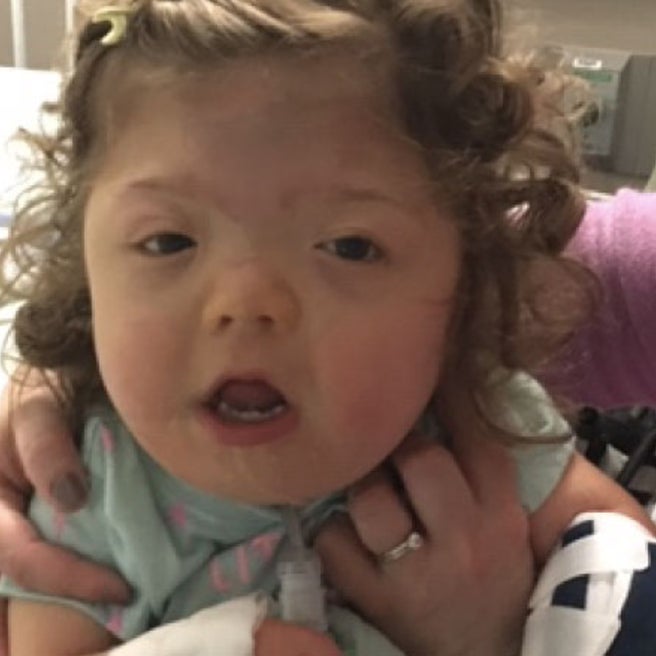What is Saethre-Chotzen syndrome?
Saethre-Chotzen syndrome is a genetic disorder characterized by varied and broad skull, face, and limb anomalies. TWIST gene mutations are responsible for causing the early fusion of the skull.
Individuals with Saethre-Chotzen syndrome typically have the following conditions:
- Craniosynostosis: early closure of one or more of the seams between the skull bones, causing an abnormal skull. This is not seen in all patients and presentation and onset is quite varied.
- Syndactyly: occasional partial fusion of the second and third fingers, usually involving only soft tissue.
- Hypertelorism: wide-set eyes.

Most children with this disorder have a relatively flat face because of underdeveloped eye sockets, cheekbones and lower jaw. Other common characteristics include asymmetrical face, low-set hairline, down-slanting palpebral fissures (the area between the open eyelids), and droopy eyelids (ptosis). Some children with Saethre-Chotzen syndrome may have additional craniofacial anomalies such as cleft palate, low-set ears and dental issues.

Seathre-Chotzen complications and treatment
Patients with Seathre-Chotzen syndrome can have related health and developmental issues, reinforcing the need for coordinated, multidisciplinary care and access to a variety of pediatric subspecialists.
At Children's Hospital of Philadelphia, we have a comprehensive Craniofacial Program where patients are seen by the following specialties:
- Plastic surgeons: craniofacial and hand surgeons
- Oral surgeons
- Neurosurgeons
- Otolaryngologists (ear, nose and throat specialists)
- Pediatric dentists
- Craniofacial-trained orthodontists
- Geneticists
- Speech and language pathologist
- Audiologist
- Psychologists
- Advanced Practice Providers (nurse practitioners and physician assistants)
- Nurses
- Pulmonary Medicine
The treatment of Saethre-Chotzen syndrome is dependent upon both functional and appearance-related needs, and should be addressed immediately after your child is born. Because of the complex issues that can be associated with Saethre-Chotzen syndrome, your child should be treated at a medical center that includes the pediatric specialists across the many clinical areas your child may need.
At CHOP, coordinated care of patients with Seathre-Chotzen Syndrome syndrome is typically managed through the Craniofacial Program, working closely with the Hand and Arm Disorders Program to treat congenital deformities of the hand; the Center for Pediatric Airway Disorders to address breathing issues; and the Martha Escoll Lubeck Feeding and Swallowing Center to manage feeding issues. Eye protection or balance issues, such as strabismus, are coordinated through the Division of Ophthalmology.
Because every patient with Seathre-Chotzen syndrome has unique problems, the timing and course of surgical treatment is highly individualized. It is important to see a surgeon with expertise in pediatric plastic, reconstructive, and oral surgery who specializes in treating this rare condition. Learn more about the surgical treatment approach for syndromic craniosynostosis.
As your child grows, CHOP also provides access to psychosocial support services to address any mental, social or psychological issues that accompany these conditions.
Watch our educational video to learn more about the services and treatment options CHOP offers to children with craniofacial conditions such as Saethre-Chotzen syndrome.
Resources to help
Saethre-Chotzen Syndrome Resources
Craniofacial Program Resources
We have gathered resources to give you information and help you find answers to your questions. We hope this makes your family's life a little easier.
Reviewed by Scott P. Bartlett, MD, Jesse A. Taylor, MD

